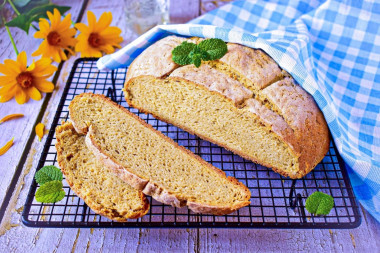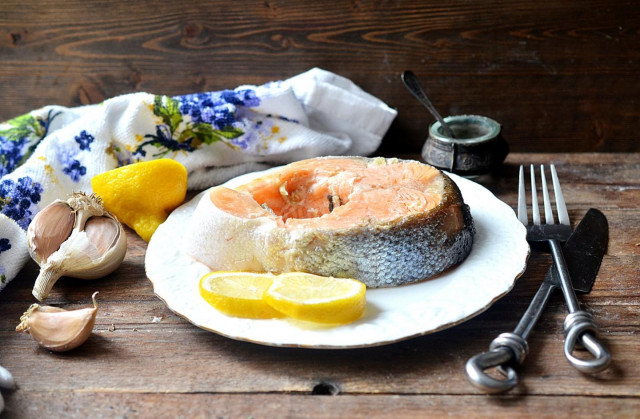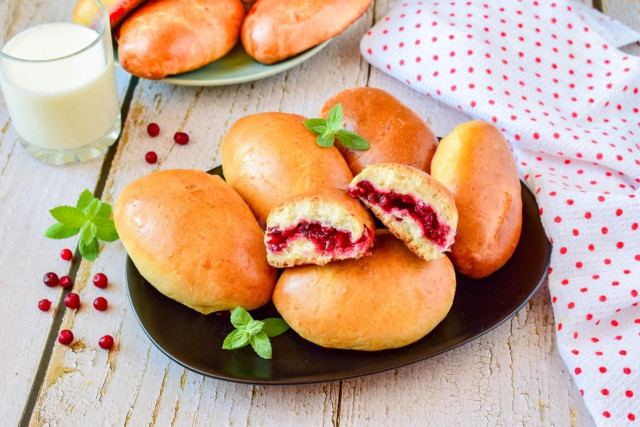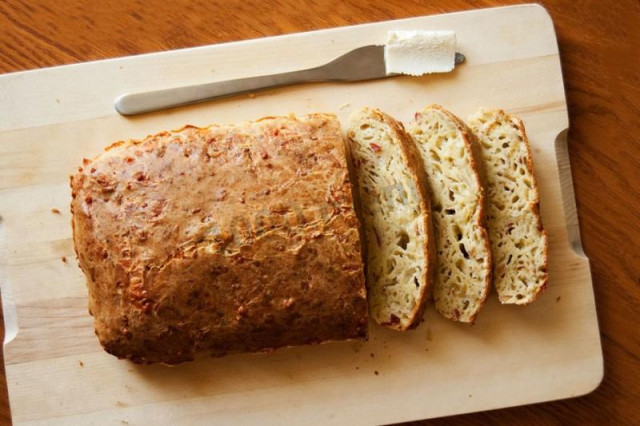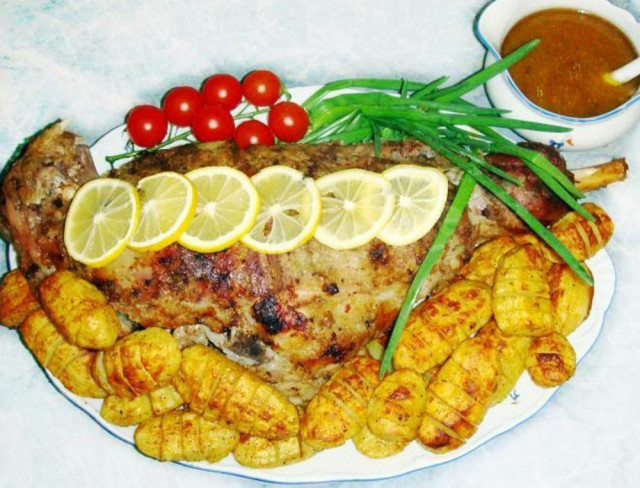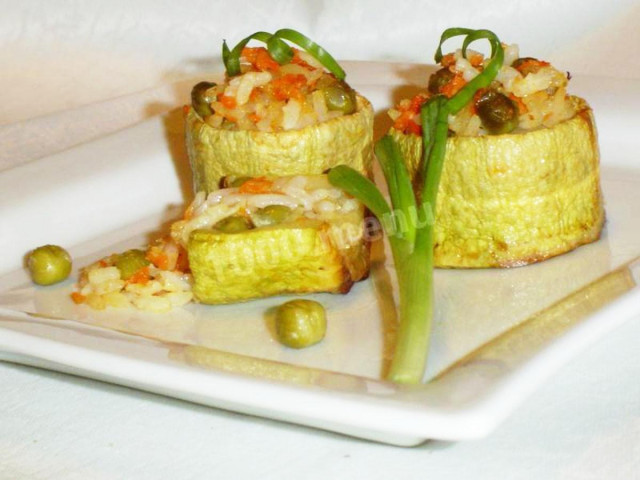Composition / ingredients
Step-by-step cooking
Step 1:

How to make bread with oatmeal? Prepare the necessary ingredients for this. Make the water slightly warm. This will start the yeast fermentation process faster. Sift both types of flour through a sieve to saturate it with oxygen. Thanks to this, the finished bread will be more airy. It is not necessary to cook bread only on oat flour. Wheat flour gives bread stickiness and porosity.
Step 2:
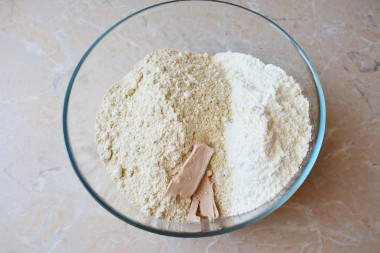
Pour both types of flour into a spacious bowl and add the pressed yeast. Rub the yeast with flour into crumbs. It is convenient to do it with your hands to feel the consistency. In order not to clog the dough with flour, leave a small amount of it separately, so that, if necessary, pour it later, when kneading the dough.
Step 3:
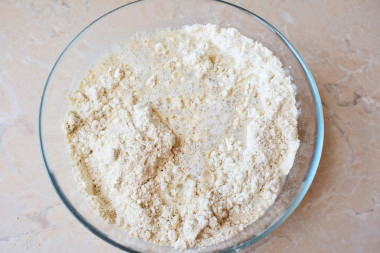
Then add salt to the flour and pour in water. Start kneading the dough. At first it may seem that there is a lot of water. Gradually, the dough will become thicker.
Step 4:

Continue kneading. Knead it well.
Step 5:
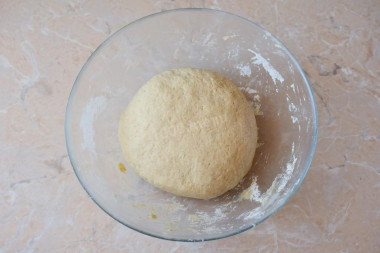
Form the finished dough into a bun and put it in a bowl from the dough. Cover with a towel and leave in a warm place for 1-1.5 hours. When forming a bun, you can lubricate your hands with vegetable oil.
Step 6:
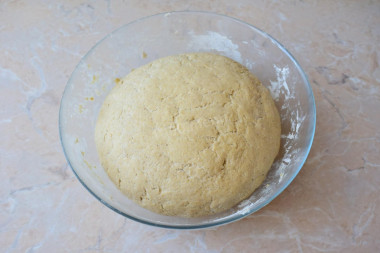
After an hour, the dough increased in volume. Knead it and form a new bun.
Step 7:

Immediately put the dough on a baking tray, the bottom of which is slightly smeared with vegetable oil. Cover the dough with a towel again and let it come up for another hour.
Step 8:

This time the dough rose much better. Make incisions with a sharp knife. They are necessary so that the dough does not tear during baking, but evenly diverges along the cuts. Brush the top of the bread with water so that it has a crispy crust. Bake the bread in the oven preheated to 220 degrees for 10 minutes, then reduce the heat to 200 degrees and leave it in the oven for another 30 minutes. Be guided by your oven.
Step 9:
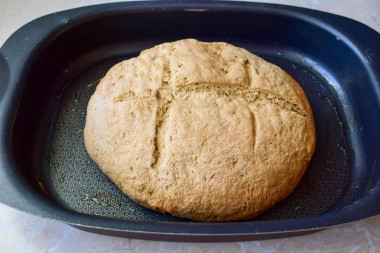
The finished bread will become appetizing-ruddy on all sides. Remove it from the oven and cool it by wrapping it in a towel. Serve to the table a little warm or completely cooled. Bon appetit!
Keep in mind that everyone's ovens are different. The temperature and cooking time may differ from those specified in the recipe. To make any baked dish successful, use useful information about the features of ovens !
Any heat-resistant form is suitable for this recipe. If you use a silicone mold, then you do not need to smear it with butter or margarine. But it is better to lightly lubricate metal, ceramic or glass dishes with vegetable oil so that the baking does not burn.
For cooking, it is better to use filtered or bottled water that is neutral to taste. If you use tap water, keep in mind that it can give the dish an unpleasant characteristic taste.
Calorie content of the products possible in the composition of the dish
- Pressed yeast - 109 kcal/100g
- Vegetable oil - 873 kcal/100g
- Salt - 0 kcal/100g
- Water - 0 kcal/100g
- Wheat flour - 325 kcal/100g
- Oatmeal - 369 kcal/100g


